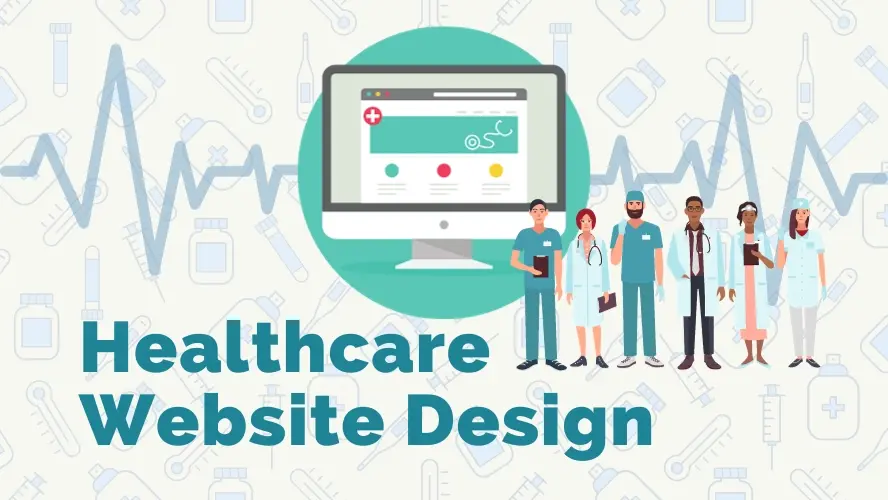In today's digital age, a well-designed healthcare website is no longer a luxury but a necessity. With over 70% of patients using the internet to research healthcare providers, a website serves as the first point of contact between patients and healthcare organizations. An effective healthcare website can attract new patients, retain existing ones, and promote patient education and engagement.
In this article, you will learn tips and best practices to create websites for healthcare providers and organizations. These websites need to be informative, engaging, and easy to use for patients and visitors alike. You will also get some WordPress plugin recommendations which are useful for building and designing healthcare websites faster.
The Importance of Healthcare Website Design
Healthcare website design is important for several reasons, which are:
1. It is often the first point of contact between patients and healthcare providers.
A well-designed website can make a positive first impression and encourage patients to learn more about the provider's services and schedule an appointment.
2. A good healthcare website can be a valuable source of information for patients.
It can provide information about the provider's services, staff, facilities, and educational resources about health conditions and treatments. Patients can also use the website to book appointments, request prescription refills, and access their medical records.
3. Healthcare websites can build trust and credibility with patients.
A well-designed website that is informative and easy to use can show patients that the provider is professional and committed to their care.
Benefits of A Good Healthcare Website Design
Here are some specific benefits of a good healthcare website design:
- Increased patient engagement
A well-designed website can help to increase patient engagement by making it easy for patients to find the information they need and to access the services they need. This can lead to improved health outcomes.
- Reduced costs
A healthcare website can help to reduce costs by automating tasks such as appointment booking and prescription refills. This can free up staff time so that they can focus on providing patient care.
- Improved patient satisfaction
A well-designed website can help to improve patient satisfaction by making it easy for patients to access the information and services they need. This can lead to increased patient loyalty.
- Enhanced brand awareness
A healthcare website can help to enhance brand awareness by providing a consistent and positive experience for patients. This can lead to increased referrals and new patients.
Healthcare Websites Specific Features
In addition to these general design principles, there are some specific features that healthcare websites may want to consider including:
1. Online appointment booking
Integrate an online appointment booking system to streamline scheduling and patient convenience. Allow patients to book, reschedule, or cancel appointments directly through the website.
2. Patient Portal
Develop a secure patient portal that grants patients access to their medical records, test results, and other important health information. This empowers patients to actively manage their healthcare.
3. Health education resources
Offer a library of health education materials, including articles, videos, and interactive tools, to educate patients about various health conditions, treatments, and preventive measures. This can help patients to learn more about their health and make informed decisions about their care.
4. Doctor bios and testimonials
Showcase the expertise and experience of your healthcare providers. Include doctor bios, patient testimonials, and professional accolades to instill confidence in patients' choices. This can help patients to learn more about the doctors and other healthcare professionals who work at the practice.
5. Emergency information
Display emergency contact information and instructions on how to proceed in a medical emergency. Make this information easily accessible and visible throughout the website. This should include information on what to do in the event of a medical emergency.
Healthcare Website Design Color Palette
When choosing a color palette for your healthcare website, it is important to consider the overall tone and feel you want to convey. You should also choose colors that are complementary and easy on the eyes.
Here are some healthcare website design color palette suggestions with pictures:
Blue
Blue is a calming and trustworthy color, which makes it a good choice for healthcare websites. It can also be used to convey a sense of professionalism and competence.
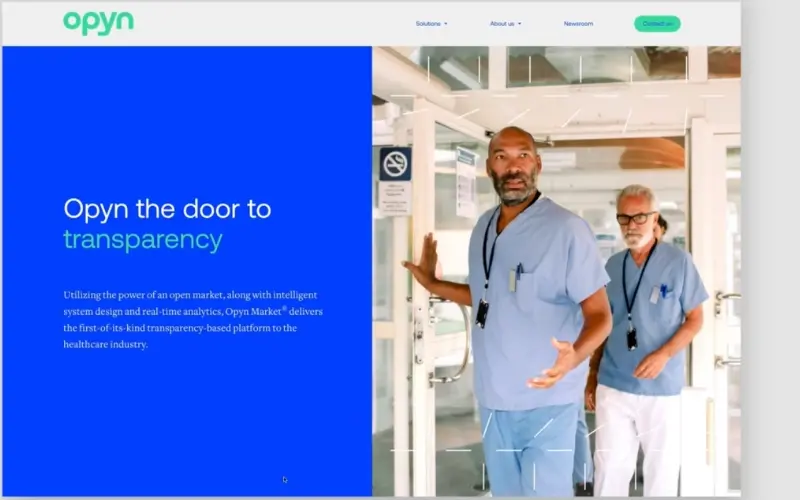
Green
Green is associated with nature and growth, making it a good choice for healthcare websites focusing on preventive care or holistic health. It can also be used to convey a sense of tranquility and healing.

Purple
Purple is associated with luxury and sophistication, which makes it a good choice for healthcare websites that target a high-end clientele. It can also be used to convey a sense of mystery and intrigue.
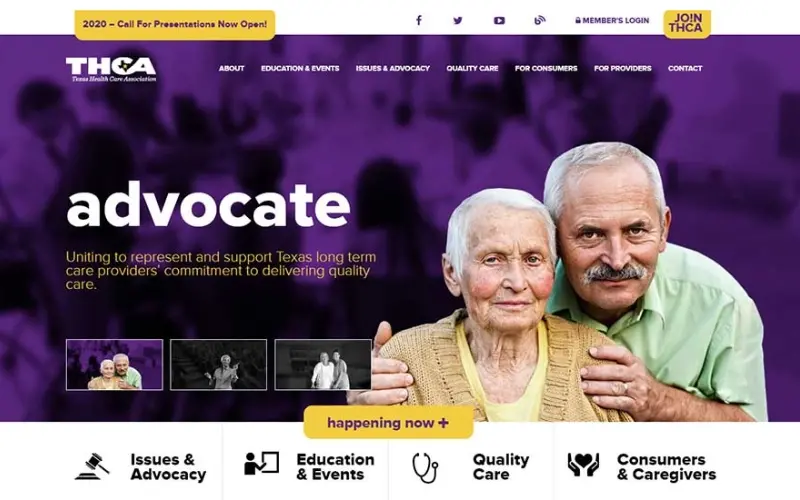
Orange
Orange is a warm and inviting color, which makes it a good choice for healthcare websites that cater to families and children. It can also be used to convey a sense of energy and vitality.
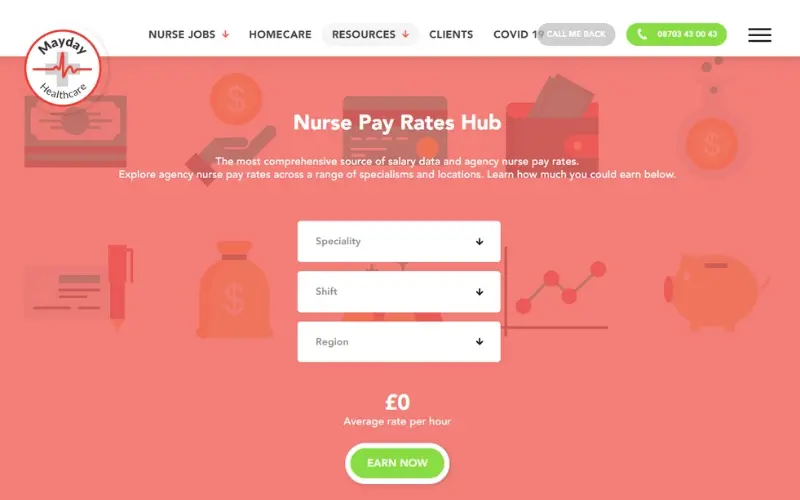
Yellow
Yellow is a cheerful and optimistic color, which makes it a good choice for healthcare websites that focus on mental health or well-being. It can also be used to convey a sense of warmth and happiness.

White
White is a clean and sterile color, which makes it a good choice for healthcare websites that need to convey a sense of professionalism and hygiene. It can also be used to create a sense of spaciousness and openness.
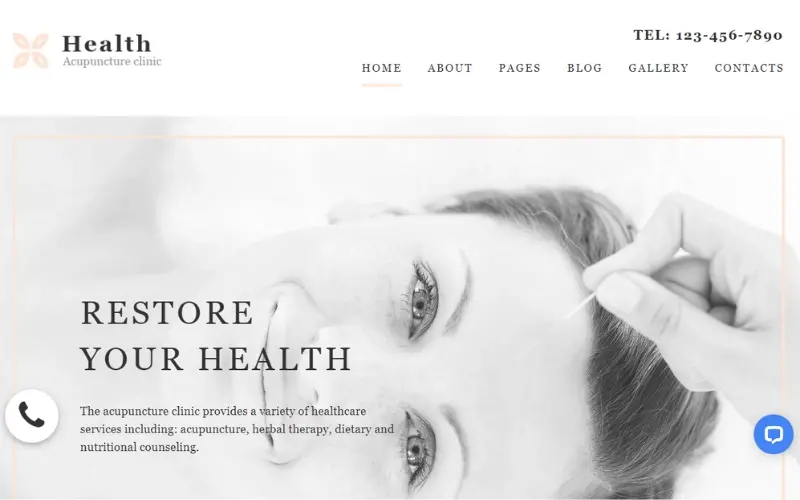
Healthcare Website Design Best Practices
Healthcare website design plays a crucial role in establishing patient trust, providing valuable information, and facilitating online interactions with healthcare providers.
Here are some essential best practices to consider when designing a healthcare website:
Prioritize Accessibility
Ensure your website adheres to Web Content Accessibility Guidelines (WCAG) 2.0 or higher, making it accessible to individuals with disabilities. This includes using clear headings, alt text for images, and providing alternative text formats for content.
Clear and Simple Navigation
Design an intuitive navigation system that allows users to easily find the necessary information. Use clear labels, consistent menus, and breadcrumbs to guide users through the website's structure.
Mobile Responsiveness
Optimize your website for mobile devices, ensuring it displays correctly and functions smoothly across various screen sizes. This caters to the growing number of users accessing healthcare information through their smartphones or tablets.
Patient-Centric Approach
Design the website with the patient's experience in mind. Consider their needs, concerns, and expectations throughout the design process. Focus on providing a user-friendly interface that facilitates easy access to information and services.
Protect Patient Data
Implement robust security measures to protect sensitive patient information. Adhere to HIPAA (Health Insurance Portability and Accountability Act) regulations and ensure data encryption and secure storage practices.
Optimize for Search Engines
Implement Search Engine Optimization (SEO) techniques to improve your website's visibility in search engine results. Use relevant keywords, optimize content, and build backlinks to enhance search rankings.
Regular Maintenance and Updates
Regularly update your website with fresh content, new features, and security patches to ensure it remains up-to-date, informative, and secure.
Gather User Feedback
Continuously collect feedback from patients and website users to identify areas for improvement and make data-driven design decisions. Use surveys, analytics, and user testing to refine the website's functionality and user experience.
Recommended Healthcare-Related WordPress Plugins
KiviCare – Clinic & Patient Management System (EHR)
KiviCare is a clinic and patient management system (EHR) WordPress plugin that helps healthcare providers streamline operations, manage patient records, and schedule appointments. It offers a comprehensive suite of features to enhance patient care and improve administrative efficiency.
Live Demo
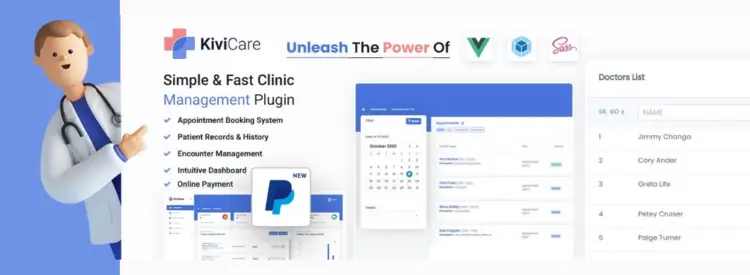
Pros
Cons
Cost Calculator Builder
The Cost Calculator Builder WordPress plugin is a versatile tool that allows you to create customized price estimation forms for your healthcare website design. It offers a drag-and-drop interface, making it easy to create forms without any coding knowledge.
Live Demo

Pros
Cons
BookingPress
BookingPress is a popular WordPress plugin that allows you to create and manage an online appointment booking system for your many types of websites including healthcare websites. It allows small/large businesses or an individual. to manage their appointment scheduling online easily with quick configuration options. It supports WordPress Guttenberg and Elementor.
Live Demo
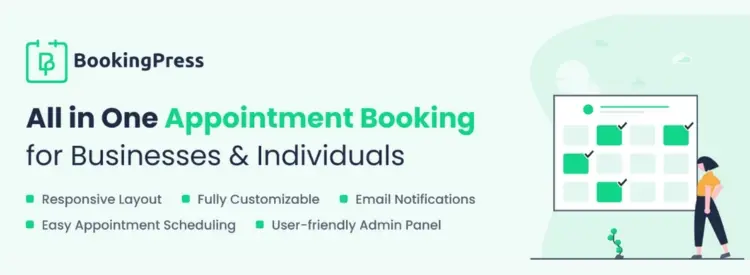
Pros
Cons
Conclusion
Healthcare website design is an important factor in a healthcare provider's success. A well-designed website can attract new patients, keep existing patients engaged and satisfied, and build a positive brand reputation.
There are several things to consider when designing a healthcare website. The most important thing is to make sure that the website is easy to use and navigate. The website should also be informative and provide patients with the resources they need to make informed decisions about their health. In addition, the website should be visually appealing and convey a sense of professionalism and trust.
Frequently Asked Questions
How do I choose a design for my website?
One of the most important things when creating a website for your art is the design. Even though your pieces of art might be amazing, people will leave if your site is hard to navigate. This is why it’s important that the site is easy on the eyes and easy to navigate.
What type of design should my fitness blog have?
When you’re a beginner, don’t go crazy with the design of the site. The most important thing is to have a site that looks professional, easy to read, and fast.
What are the best practices for responsive design in WordPress themes?
Use a mobile-first approach, implement media queries, test across various devices, and prioritize user experience on both desktop and mobile.
Is a website on WordPress safe?
Websites on WordPress are safe, however to avoid hacking keep your website up to date.

Audee Mirza is a graphic designer and WordPress developer at audeemirza.com who resides in Surabaya, Indonesia. She's also the author of Graphic Identity Blog, a professional logo designer, and often creates vector illustrations for clients and marketplaces. She enjoys good typography design and all kinds of animation.
View all posts by Audee Mirza















